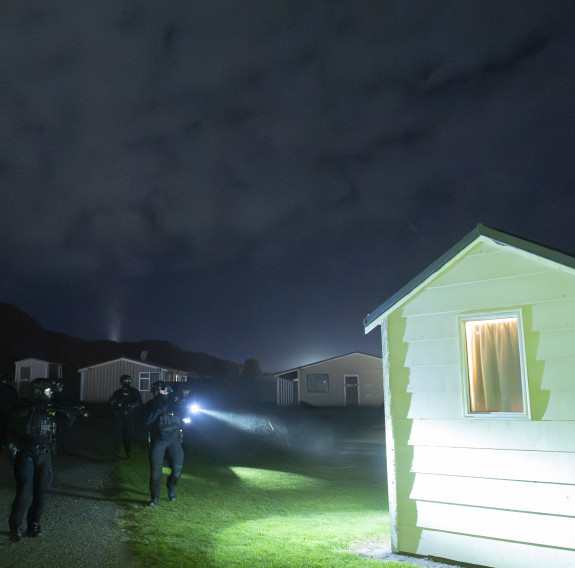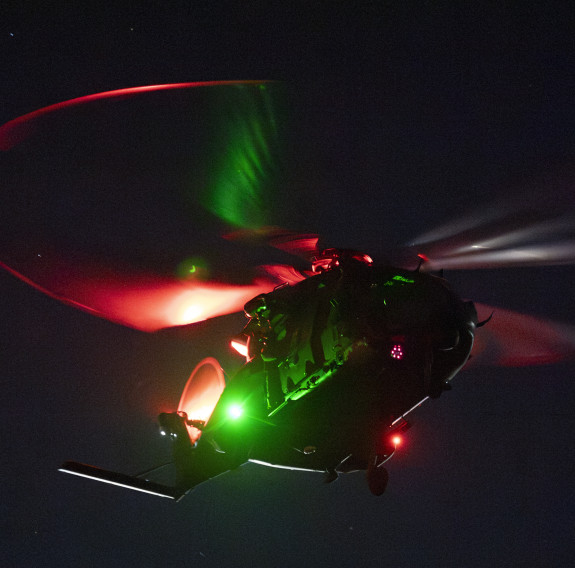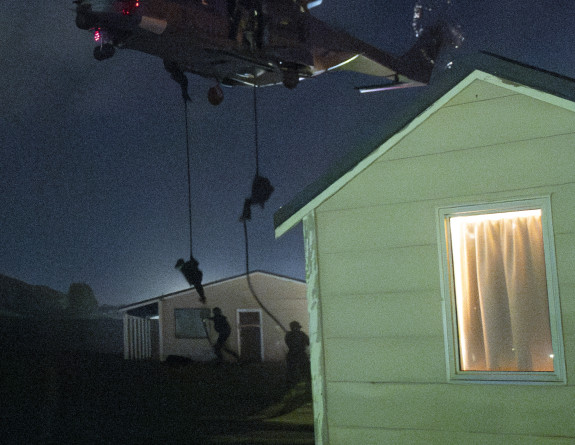Collaborative work at Australian airshow
08 April 2025
Unfortunately you are viewing this website on an outdated browser which does not support the necessary features for us to provide an adequate experience. Please switch to a modern browser such as latest version of Google Chrome, Mozilla Firefox, Apple Safari or Microsoft Edge.
Ngā mihi nui
Royal New Zealand Air Force (RNZAF) helicopter crews have been honing their skills needed to support New Zealand Police’s Special Tactics Group (STG).
Rescuing hostages was the backdrop for Exercise Pekapeka - a joint exercise between RNZAF No. 3 Squadron and STG held recently in the Whanganui, Waiouru and Manawatū region.
The week-long exercise simulated various critical scenarios involving STG fast roping out of an NH90 helicopter to rescue “hostages” and apprehend the “offenders”.
Fifty-six RNZAF aviators and support crew took part, supported by three NH90s and 14 Police personnel including STG command, intelligence, dogs and operators.
The exercises involved night-time low flying in stealth mode by the NH90 crew, an intensive and important training aspect.

Hostage situation exercise with NZ Police | Royal New Zealand Air Force
Squadron Leader Lachie Johnston says Pekapeka presents an opportunity to support Police and complete full mission-planning cycles in support of the ground mission.
“As well as having the flying skills necessary for such operations, its essential crews have an understanding of the ground call sign’s mission and plans.
“This ensures that the crews have a shared understanding of all the moving parts, and are able to readily adapt in the face of new threats or a changing scenario”, he said.
“It also means that when the time comes for aircrew to use the training for real, it isn’t the first time they have come across a full scenario with such complexity,” Squadron Leader Johnston said.


NH90 pilot Flight Lieutenant Jamie Besley says low flying and flying at night requires a lot of training.
“They require an elevated level of skill and teamwork to achieve the aim effectively and safely, with the aim being to navigate to a specific point at a specific time in order to deliver a concentration of force utilising the element of surprise.”
Inspector Freda Grace, National Commander STG, says having established relationships, interoperability and understanding for responding to “high-end” incidents only comes from training together.
“The joint training – or interoperability - includes communications, tactics, equipment, and standard operating procedures around the safety settings, ensuring that we both understand what, how and when things are going to happen,” Inspector Grace said.

Exercise Pekapeka, a joint exercise between No. 3 Squadron and STG.